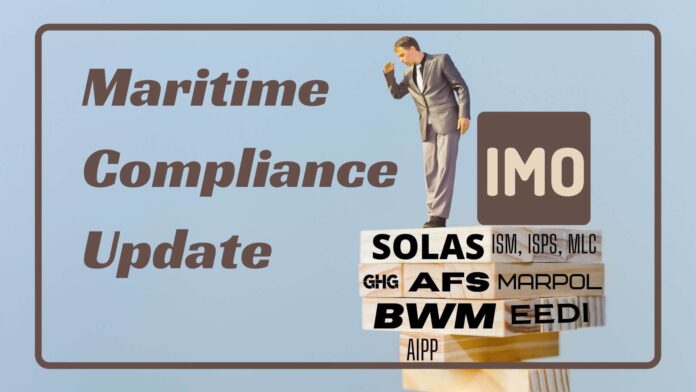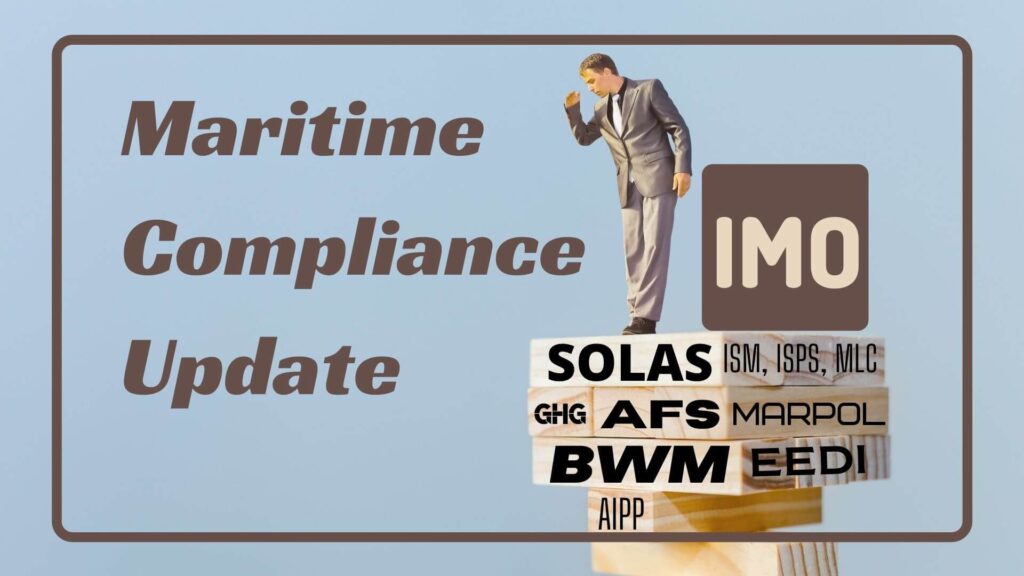
(www.MaritimeCyprus.com) The IMO’s marine environmental protection committee has agreed to move forward with the short-term measures that have been proposed by its intercessional meeting participants, but not without a number of reservations and comments about the level of compromise that has been needed to find agreement.
The IMO agreed in 2018 on an initial strategy regarding the reduction of greenhouse gases and eventual decarbonisation of international shipping. To get that far in 2018 was seen by many as being remarkable given the lack of agreement on issues such as market-based measures and firm technological rules for the industry.
Following this 2018 agreement work began on what are now seen as short-term, mid-term and long-term measures.
It is these short-term measures (targeting existing ships), not the mid- and long-term solutions, that have been the subject of much of the debate within seven intercessional meetings between MEPC members. The outcomes have been discussed at the IMO’s MEPC meeting which is being held remotely under somewhat difficult conditions (shortened days, different time zones, and certain technical difficulties associated with digital events).
The outcome was less a set of strict measures (such as mandatory slow steaming) but a set indexes and a grading scheme that vessels will be encouraged to meet.
For those familiar with the energy efficiency design index for newbuilding’s (one of the two existing mandatory CO2 limiting measures on shipping) then the EEXI is something akin to that with a benchmark measure. The other measure of note is the Carbon Intensity Index which will become associated with an A to E grading scheme, something similar perhaps to what has been seen on some electrical appliances.
The complaint of some member states is the lack of hard limits agreed, with some countries and NGOs vocal about this compromise being greenwashing and unable to move shipping in the right direction.
A number of delegates taking part at the IMO did point out that given the need to compromise on the nature of the debate, and how action is needed now, the proposals to amend existing environmental rules were acceptable even while being a disappointment. Some pointed out the lack of time available to restart the talks again.
MEPC 75 Meeting highlights
- Adopted amendments to MARPOL Annex VI on fuel oil sampling and verification of sulphur content and the Energy Efficiency Design Index (EEDI).
- Adopted amendments to the Ballast Water Management Convention on commissioning testing of ballast water management systems (BWMS).
- Approved amendments to MARPOL Annex VI on the Energy Efficiency Existing Ship Index (EEXI), Carbon Intensity Indicator rating (CII) and enhanced Ship Energy Efficiency Management Plan (SEEMP).
- Approved amendments to MARPOL Annex I, with a prohibition on the use and carriage of heavy fuel oil for use as fuel by ships in Arctic waters.
- Approved amendments to the Anti-Fouling System (AFS) Convention to include controls on cybutryne.
Adoption of amendments to mandatory instruments:
MARPOL Annex VI:
Fuel oil sampling and verification: The amendments introduce two new fuel oil samples for the purpose of confirming compliance with the MARPOL sulphur requirements and the carriage ban for fuel oil with a sulphur content exceeding 0.50%, namely the “in-use” sample drawn from the fuel oil system representing the fuel in use, and the “on-board” sample representing fuel intended to be used and carried in the fuel oil storage tanks.
Furthermore, sampling points for the purpose of taking the “in-use” sample will be required, fitted or designated. For existing ships constructed before 1 April 2022, this shall be performed no later than the first IAPP renewal survey carried out on or after 1 April 2023. Please note that the fitting or designating of sampling points is not applicable to a fuel oil system for low-flashpoint fuels (flashpoint <60°C).
Finally, a new Part 2 was added to Appendix VI of MARPOL Annex VI giving the verification procedure for the new “in-use” and “on-board” samples. To avoid ships being unjustly fined for marginal excess in sulphur content beyond their control, as opposed to the verification procedure in Part 1 for the MARPOL-delivered sample taken during bunkering, a 95% confidential interval has been given. This implies that a sulphur content of up to 0.53% may be accepted as compliant when testing the “in-use” and “on-board” samples.
The EEDI Phase 3 starting date will be advanced from 1 January 2025 to 1 April 2022 for container ships, large gas carriers (>15,000 DWT), general cargo ships, LNG carriers and cruise passenger ships having non-conventional propulsion. A stepwise reduction requirement will apply to container ships, starting with a 30% reduction rate for small container vessels and increasing up to 50% for very large container ships.
The EEDI reference line for large bulkers above 279,000 DWT will be constant, calculated based on 279,000 DWT, regardless of the actual DWT.
The amendments will enter into force on 1 April 2022.
Ballast Water Management Convention:
A commissioning test of the ballast water management system (BWMS) based on BWM.2/Circ.70/Rev.1 (revised at this session) will be required for the initial survey or when performing an additional survey for retrofits. The commissioning test analysis undertaken may be indicative and will not apply to ships that already have an installed BWMS certified under the BWMC. Please note that some flag administrations are requiring commissioning testing ahead of the BWMC amendments entering into force.
A new tick box for management methods other than D-1, D-2 and D-4 has been added in the International Ballast Water Management Certificate. This is meant for vessels using alternative approaches, such as reception facilities (B-3.6-7).
The amendments will enter into force on 1 June 2022.
Harmful aquatic organisms in ballast water:
The draft revised the BWM circular on “Guidance for the commissioning testing of ballast water management systems” was approved as BWM.2/Circ.70/Rev.1. The compliance testing is intended to confirm the correct installation of the equipment as per the amendments to the BWMC adopted at this session.
Draft amendments to the “Guidance on ballast water sampling and analysis for trial use” in accordance with the BWM Convention and Guidelines (G2) was approved as BWM.2/Circ.42/Rev.2. This includes two new indicative methods and a reference to the detail method of MPN Dilution Culture+Motility.
Air pollution and energy efficiency:
No further exemption was granted for the Tier III NOx emissions regulations for large yachts with a loadline greater than 24 meters in length and less than 500 GT, meaning that the Tier III NOx emission levels will be applicable for such yachts with keel laid after 1 January 2021.
Most items under this agenda item were postponed to MEPC 76 including adoption of the revised Guidelines for Exhaust Gas Cleaning Systems (resolution MEPC.259(68)). A Correspondence Group was established to work further on items that were not discussed at MEPC 75.
Reduction of GHG emissions:
Draft amendments to MARPOL Annex VI were approved, introducing new regulations to reduce GHG emissions from ships. These are the Energy Efficiency Existing Ship Index (EEXI), operational Carbon Intensity Indicator (CII), which includes a rating scheme (A to E), and an enhanced SEEMP with mandatory content, approval and subsequent audits.
The EEXI will impose a requirement equivalent to Energy Efficiency Design Index (EEDI) Phase 2 or 3 (with some adjustments) to all existing ships regardless of the year of build and is intended as a one-off certification. The EEXI is to be verified and a new Energy Efficiency Certificate issued no later than the first annual International Air Pollution Prevention (IAPP) survey on or after 1 January 2023.
All cargo and cruise ships above 5,000 GT need to calculate a CII (e.g. Annual Efficiency Ratio [AER]) given in grams CO2 per DWT-mile) and will be given an annual rating of A to E. The rating thresholds will be increasingly stringent towards 2030. For ships that achieve a D rating for three consecutive years or an E rating in a single year, a corrective action plan needs to be developed as part of the SEEMP and approved.
On or before 1 January 2023, all ships above 400 GT need to have an approved SEEMP on board, and the implementation of the SEEMP will be subject to audits. For ships above 5,000 GT, the SEEMP also needs to include mandatory content, such as an implementation plan on how to achieve the CII targets.
The amendments are expected to be adopted at MEPC 76 in June 2021 with entry into force on 1 January 2023.
A Correspondence Group will, together with an intersessional working group in May 2021, finalize the necessary guidelines supporting the approved regulations, including baselines, methods of calculations and ship-segment-specific requirements, to be approved at MEPC 76.
The industry proposal for an International Maritime Research and Development Board (IMRB) saw a robust discussion; however, the only conclusion was to invite interested parties to comment on this and related proposals through submissions to MEPC 76.
Pollution prevention and response
IBC Code
A Circular giving guidance on replacing the IBC Code certificates following the 2019 amendments of the IBC Code was approved. It was also agreed to include a qualifier following the IBC Code product name for products currently listed in Ch.17 for which the carriage requirements have been revised in order to apply the new carriage requirements ahead of the next IBC Code amendments.
A PPR.1 Circular concerning the application of revised carriage requirements for “methyl acrylate” and “methyl methacrylate” was endorsed.
AFS Convention
Amendments to the AFS Convention to include controls on cybutryne and an operative paragraph with respect to issuance of the new International Anti-fouling System Certificate (IAFSC) were approved.
This implies a ban to apply or re-apply anti-fouling systems containing cybutryne from 1 January 2023. All ships should remove or seal such anti-fouling systems no later than 60 months following the last application of such anti-fouling system prior to 1 January 2023, except fixed and floating platforms, FSUs and FPSOs constructed prior to 1 January 2023 and not dry-docked on or after that date; ships not engaged in international voyages; and ships of less than 400 GT engaged in international voyages, if accepted by the coastal state.
The amendments are expected to be adopted at MEPC 76 in June 2021 with entry into force on 1 January 2023.
Ban on the carriage of HFO as fuel in the Arctic
Amendments to MARPOL Annex I, Reg. 43A, prohibiting the use and carriage of HFO as fuel in the Arctic from 1 July 2024 were approved. For vessels complying with Reg. 12A, fuel oil tank protection (e.g. double hull), the proposed entry into force date is 1 July 2029. There is also an option for states with an Arctic coastline to waive the requirement for ships flying its flag and operating in its water until 1 July 2029.
The amendments are expected to be adopted at MEPC 76 in June 2021 with entry into force on 1 July 2024.
Implementation of IMO instruments
Amendments to MARPOL Annexes I, IV and VI were approved, exempting unmanned non-self-propelled (UNSP) barges from survey and certification requirements.
The amendments are expected to be adopted at MEPC 76 in June 2021 with entry into force on 1 January 2023.













